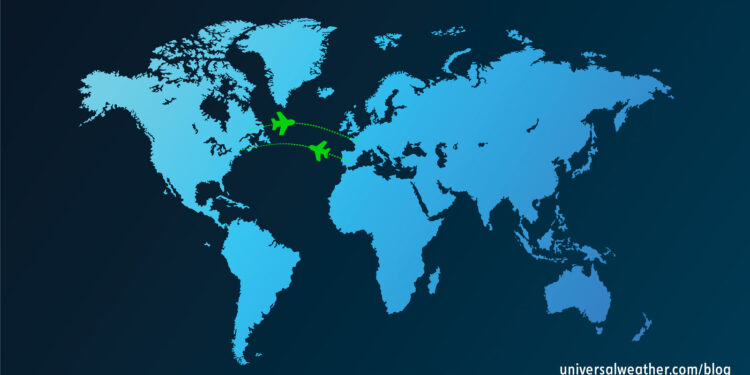North Atlantic Regional Data Link Mandate: Part 1 – Implementation

This business aviation blog post is part of a series on the next phase of the North Atlantic Data Link Mandate.
Phase 2 of the North Atlantic Data Link Mandate (NAT DLM) is being implemented in three stages – 2A, 2B, and 2C – commencing February 5, 2015; December 7, 2017; and January 30, 2020, respectively. Over time there will be changes in both expanded vertical and horizontal boundaries of NAT DLM airspace. These changes will significantly impact general aviation operators venturing into NAT DLM airspace.
The following is an overview of what you need to know about the implementation of this mandate:
1. Impact of new North Atlantic requirements
NAT DLM airspace operational changes will impact a lot of operators, as many operators do not have the required navigational (nav) equipment to meet enhanced airspace qualification standards. Operators must have J1 through J7 to indicate in Remarks Section 18 of their International Civil Aviation Organization (ICAO) flight plans that they’re Future Air Navigation System (FANS 1/A) equipped. Additionally, operators will need to list a D1 code in remarks section 18 of the flight plan, at minimum, to confirm that the aircraft is Controller-Pilot Data Link Communications (CPDLC)-equipped. If you don’t have appropriate equipment, and/or you file in the wrong airspace, your flight plan will likely be denied by air traffic control.
2. Background on data link mandates
Phase 1 of NAT DLM required operators to be CPDLC-equipped for the two middle North Atlantic Tracks (NATs), between flight levels (FLs) 360 and 390 inclusive. In Phase 2A this requirement is being extended to include all NATs. With implementation of these changes, there’s no guarantee that operators without required nav equipment will be able to climb/descent through the affected tracks. Approvals to do so will be reviewed on a case-by-case basis, with no guarantee that they’ll be granted.
3. Responsible authorities
Responsibility for and coordination of NAT DLM is shared by entities including NAV Canada and Shanwick Oceanic. The Federal Aviation Authority issued a notice regarding these changes in December 2014.
4. Goals of this mandate
NAT DLM is being implemented to provide safety and efficiency improvements for enroute operations over the north Atlantic, as supported by enhanced use of datalink in line with ICAO’s Global Air Navigation Plan. This is a collaborative decision-making process among governing entities, with the goal of putting more aircraft in the available airspace by taking advantage of safer/newer nav equipment.
5. Avoiding affected airspace
There are ways to avoid airspace affected by NAT DLM. Operators traveling against the tracks and when the NATs are not active (1900-0100 UTC) usually won’t encounter problems. At these times you may travel through the airspace without need for the otherwise needed nav equipment. The other option, if you’re not CPDLC-equipped, is to operate outside the NATs, including above/below FL 360-390 inclusive. However, no operator exemptions are currently available to traverse the affected airspace without CPDLC capability.
6. Flight plan considerations
Accurate coding for onboard nav equipment must be included in your ICAO flight plan. It’s important to have correct equipment codes noted in your flight plan in order to gain access to NAT DLM-designated airspace. Always ensure that nav equipment is properly noted in applicable sections of your flight plan.
7. Additional reading
For more information on NAT DLM, please see our article titled: North Atlantic Data Link Mandate – What You Need to Know.
Closing thoughts
There are ways to avoid certain requirements of NAT DLM airspace for operators not equipped to comply with the phased navigation equipment mandates. Be aware, however, that NAV Canada and Shanwick are becoming more strict about non-compliant operators wanting to climb/descent through NAT DLM airspace.
Questions?
If you have any questions about this article or would like flight planning assistance for your next trip, contact me at markmiller@univ-wea.com.
Stay tuned for Part 2, which covers the NAT DLM road map.



